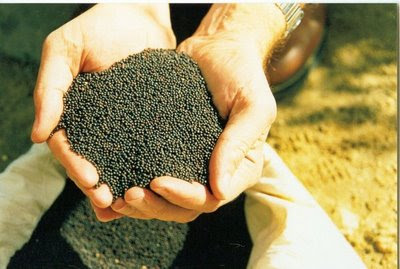A friend forwarded me a post on Butter and Margarine, for my comment. My comments, in blue, are interspersed with the original item, in black.
Not so, Margarine was developed as a butter substitute as a result of a competition by Napoleon III in the med-1800s. It is not fatal to turkeys.
It was a white substance with no food appeal so they added the yellow colouring and sold it to people to use in place of butter. How do you like it? They have come out with some clever new flavourings....
Yes, it is white and unappealing.
DO YOU KNOW.. The difference between margarine and butter?
Yes.
Read on to the end...gets very interesting!
Both have the same amount of calories.
True.
Butter is slightly higher in saturated fats at 8 grams; compared to 5 grams for margarine.
True.
Eating margarine can increase heart disease in women by 53% over eating the same amount of butter, according to a recent Harvard Medical Study.
No reference given to the study so cannot confirm or deny. Sounds dodgy.
Eating butter increases the absorption of many other nutrients in other foods.
Yes, but so does Margarine.
Butter has many nutritional benefits where margarine has a few and only because they are added!
Broad statement with no supporting information. Margarine has added vitamins A & D. Butter has only natural levels but they are not necessarily as high as the fortified margarine.
Butter tastes much better than margarine and it can enhance the flavours of other foods.
Very true. A lot of the flavour of margarine comes from added skim milk powder.
Butter has been around for centuries where margarine has been around for less than 100 years .
False. Centuries or more for butter, 150 years or more for margarine.
And now, for Margarine..
Very High in Trans fatty acids.
This was true for old style margarines. Modern styles have low levels of trans fats.
Triples risk of coronary heart disease ...
No evidence supplied.
Increases total cholesterol and LDL (this is the bad cholesterol) and lowers HDL cholesterol, (the good cholesterol)
No evidence supplied.
Increases the risk of cancers up to five times..
No evidence supplied.
Lowers quality of breast milk
No evidence supplied.
Decreases immune response.
No evidence supplied.
Decreases insulin response.
No evidence supplied.
And here's the most disturbing fact... HERE IS THE PART THAT IS VERY INTERESTING!
I have never trusted people who need to type in capitals.
Margarine is but ONE MOLECULE away from being PLASTIC... and shares 27 ingredients with PAINT.
What does "one molecule away from being plastic" mean? What is the molecule?
Margarine is as close to plastic as butter is. Neither is particularly close. Pretty much every chemical is only a step or two from a plastic. That means nothing. Protein, as a polymer of amino acids, is a plastic. Who cares? And the paint? If the writer is talking old-style linseed oil based paints, well there may be some common chemicals. But the same could be said for any product containing animal or vegetable fats.
These facts alone were enough to have me avoiding margarine for life and anything else that is hydrogenated (this means hydrogen is added, changing the molecular structure of the substance).
True
Open a tub of margarine and leave it open in your garage or shaded area. Within a couple of days you will notice a couple of things:
* no flies, not even those pesky fruit flies will go near it (that should tell you something)
But they don't come to butter either. Why should they? Neither contain much content to appeal to a fly. Or to an ant.
* it does not rot or smell differently because it has no nutritional value ; nothing will grow on it. Even those teeny weeny microorganisms will not a find a home to grow.
Both butter and margarine will go rancid. Both will dry out. Both have the same nutritional value. The writer has forgotten that he said early that margarine had the same calories as butter. Margarine will, if anything, tend to go mouldy more readily than butter. Is mould a teeny weeny organism? Yes.
Why? Because it is nearly plastic . Would you melt your Tupperware and spread that on your toast?
No, it's not. It is a synthetically hardened vegetable oil that has added, colour, vitamins, milk powder, water and salt. I have taken cream and made butter in my kitchen. But there is no way I could make margarine. Even though I know exactly what to do and I have a degree in plastics. It is beyond even Heston's kitchen.
For more on the manufacture of margarine, see this earlier post.
Share This With Your Friends.....(If you want to butter them up')!
Chinese Proverb:
When someone shares something of value with you and you benefit from it, you have a moral obligation to share it with others.
Pass the BUTTER PLEASE"
You can share this post too, if you wish.



